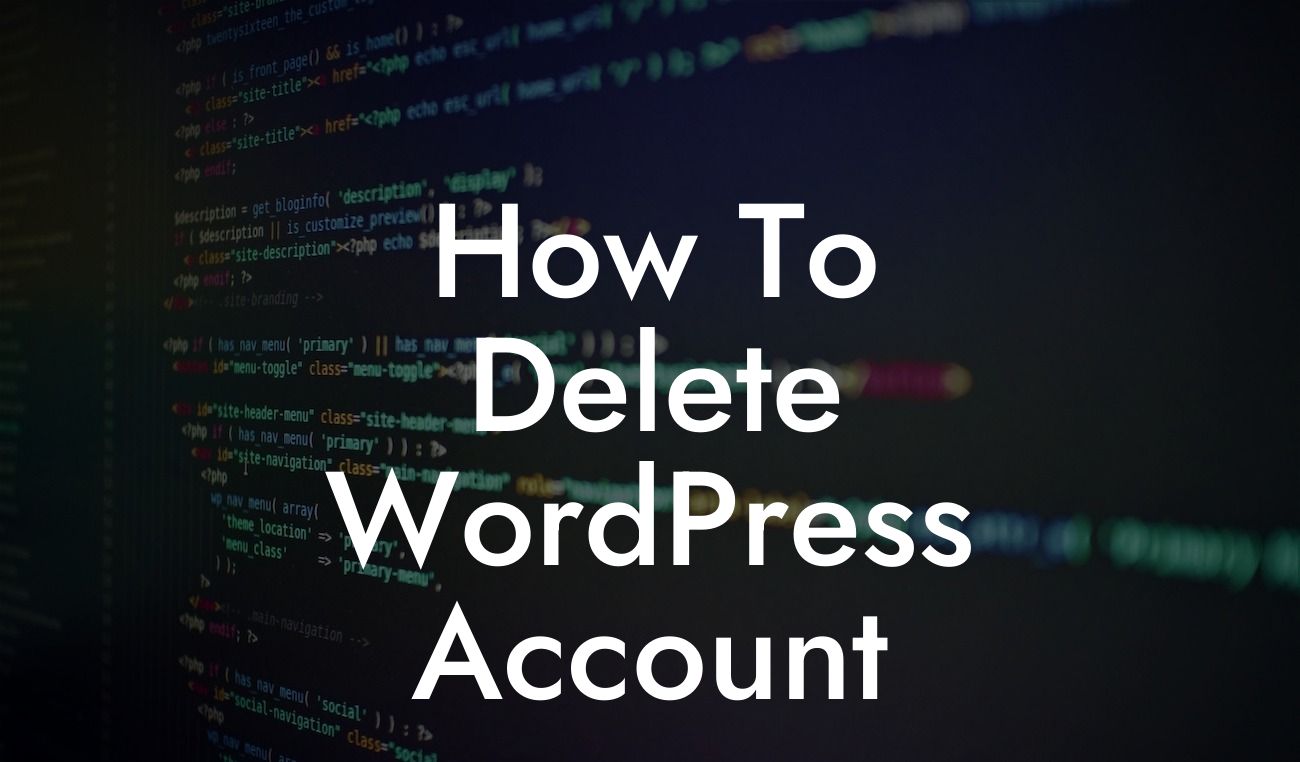If you're a small business owner or an entrepreneur, having a strong online presence is crucial. This often includes having a WordPress account where you manage your website and blog. However, there may come a time when you need to delete your WordPress account. Whether you're rebranding, no longer need the account, or simply want to start fresh, we've got you covered. In this guide, we'll walk you through the step-by-step process of deleting your WordPress account. So let's dive in and discover how you can bid farewell to your WordPress account and embrace the extraordinary.
H2: Benefits of Deleting Your WordPress Account
- Enhanced Security: One of the main benefits of deleting your WordPress account is the enhanced security it offers. By closing your account, you eliminate any potential vulnerabilities or risks associated with maintaining outdated plugins or themes.
- Improved Efficiency: Deleting your WordPress account allows you to streamline your online presence. By eliminating unnecessary accounts, you can focus on managing and optimizing the platforms that truly matter to your small business or entrepreneurial venture.
- Brand Consistency: Rebranding or starting fresh? Deleting your WordPress account helps maintain brand consistency. Instead of leaving outdated content or design elements behind, you can ensure a clean slate for your new venture.
Looking For a Custom QuickBook Integration?
H2: Step-by-Step Guide to Deleting Your WordPress Account
1. Backup Your Data: Before taking any action, it's crucial to backup all your existing data. This includes your website files, plugins, themes, and any other important content you want to keep.
2. Export Content: WordPress allows you to export your content, which can be useful if you plan to migrate it to another platform. Export your posts, pages, and other essential content using the built-in export tool in the WordPress dashboard.
3. Disable Plugins: Go through your list of installed plugins and disable any active plugins you have. This ensures a smooth and error-free deletion process.
4. Remove Themes: Similarly, remove any active or inactive themes that you no longer need. Go to the Appearance tab on your WordPress dashboard and delete the themes you wish to remove.
5. Deactivate and Delete Plugins: Once you have disabled the plugins, deactivate and delete them one by one from the plugins section in your WordPress dashboard.
6. Delete Content: It's time to delete your posts, pages, and other content. Be cautious and make sure you have exported and backed up everything you need before proceeding with the deletion.
7. Delete WordPress Account: Finally, to permanently delete your WordPress account, reach out to the WordPress support team or follow their provided instructions.
How To Delete Wordpress Account Example:
To better understand the process, let's consider a realistic example. Sarah, a small business owner, started a blog on WordPress a few years ago. However, she recently decided to rebrand her business and needed a fresh start. She followed the step-by-step guide mentioned above, backed up her data, exported her content, disabled plugins, removed themes, and deleted her content. Sarah then contacted the WordPress support team, who promptly helped her delete her account, allowing her to achieve the brand consistency she aimed for.
Deleting your WordPress account can be a liberating experience for small businesses and entrepreneurs. By following the step-by-step guide outlined in this article, you can confidently bid farewell to your WordPress account while ensuring enhanced security, improved efficiency, and brand consistency. Don't forget to share this guide with others who might find it helpful. Explore more guides on DamnWoo to elevate your online presence further, and don't hesitate to try our awesome WordPress plugins to supercharge your success. Good luck on your journey!













